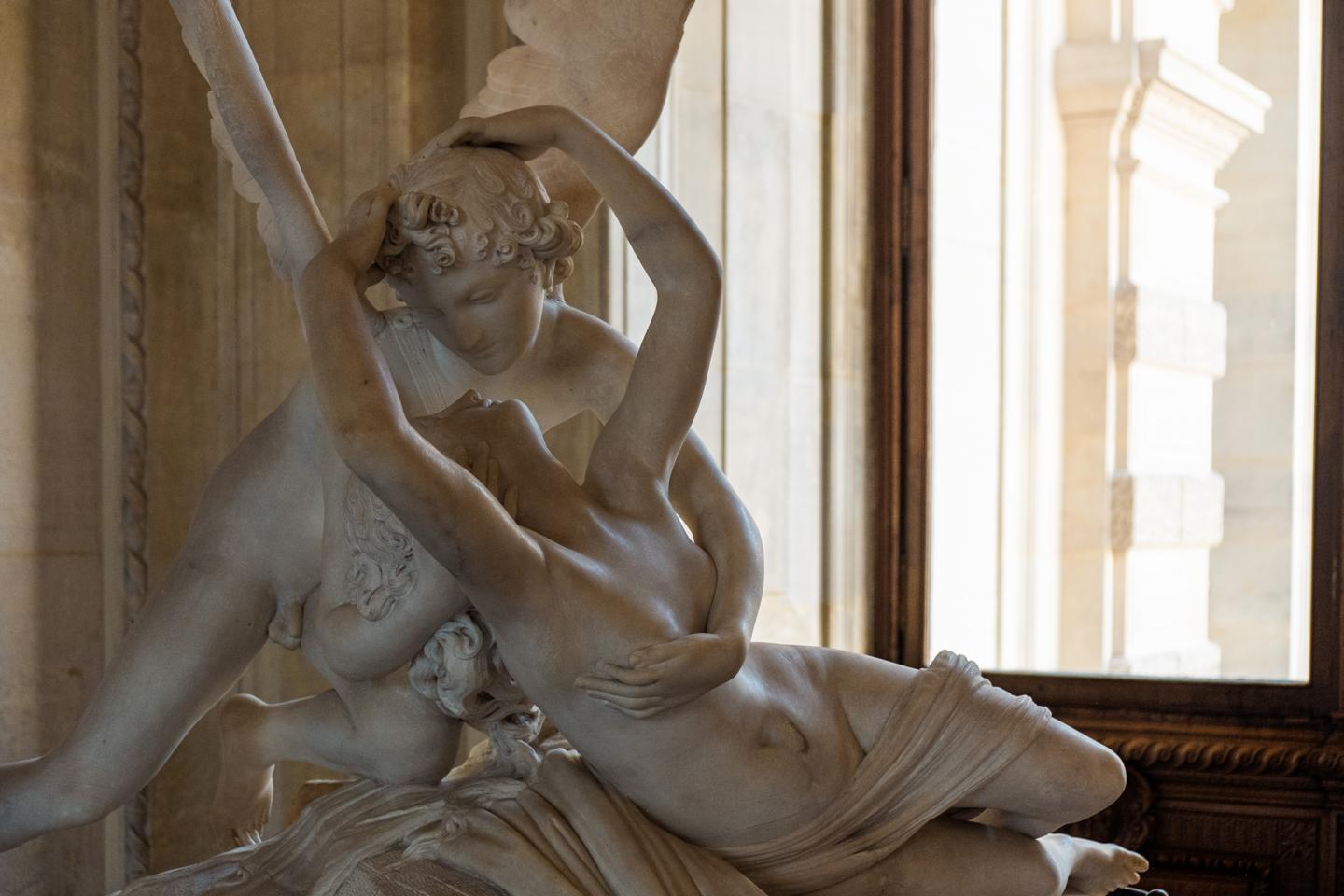Psyche revived by Cupid's kiss

Psyche revived by Love's kiss is an emblematic sculpture exhibited at the Louvre Museum in Paris. This magnificent work was created by Antonio Canova, a renowned Italian sculptor, in the early 19th century.
The sculpture depicts the moment when Psyche, a mythological princess, is reanimated by the kiss of Cupid, the god of Love. Psyche lies on a bed, looking sleepy, while Cupid, with his angel wings outstretched, leans in to give her a kiss. The scene is captured with great delicacy and attention to detail, which makes the sculpture incredibly realistic.
The sculpture is made of white marble, which gives it an elegant and timeless appearance. The folds of the draperies surrounding the figures are sculpted with great precision, giving an impression of movement and lightness. The faces of the two characters are imbued with an expression of tenderness and gentleness, perfectly capturing the love and beauty of this moment.
Psyche revived by Love's kiss is exhibited in a room specially dedicated to the sculptor Antonio Canova. The room is lit to highlight the sculpture and create an intimate and romantic atmosphere. Visitors can admire the work from all angles, appreciating the minute details and finesse of Canova's work.
This sculpture is considered one of Canova's finest achievements and is a must-see for art lovers and tourists visiting the Louvre. She symbolizes love and rebirth, and her timeless beauty continues to captivate viewers around the world.
© ChatGPT 3.5
1. Be sure to visit the room dedicated to Antonio Canova to admire this magnificent sculpture.
2. Take the time to observe the intricate details of the carving, such as the folds of the draperies and the expressions of the faces.
3. Try to find the right angle to fully appreciate the beauty of the artwork.
4. Take advantage of the room lighting to create a romantic atmosphere during your visit.
5. Feel free to take photos, but be sure to follow museum rules.
6. Learn about the story of Psyche and Cupid to better understand the context of the sculpture.